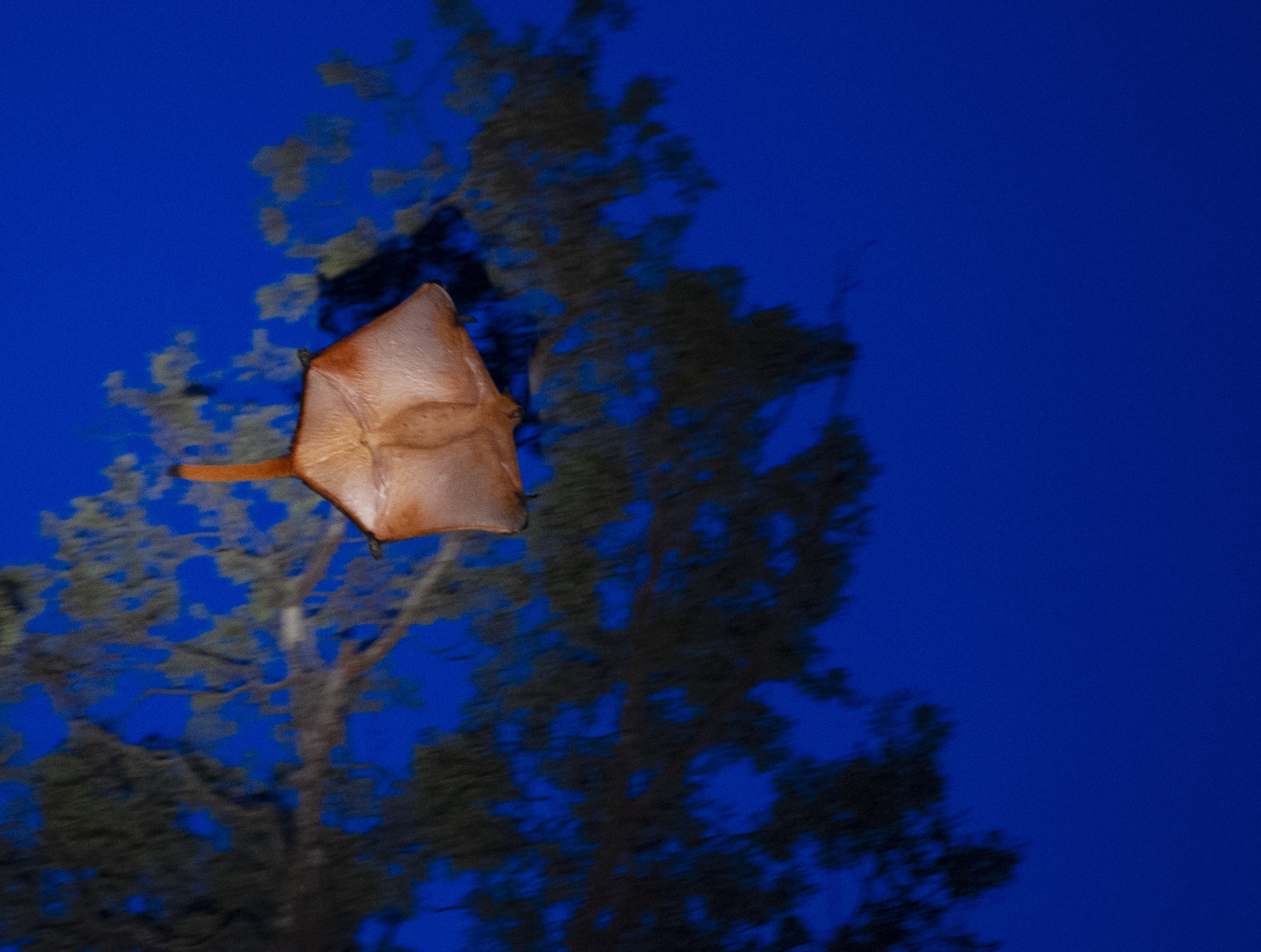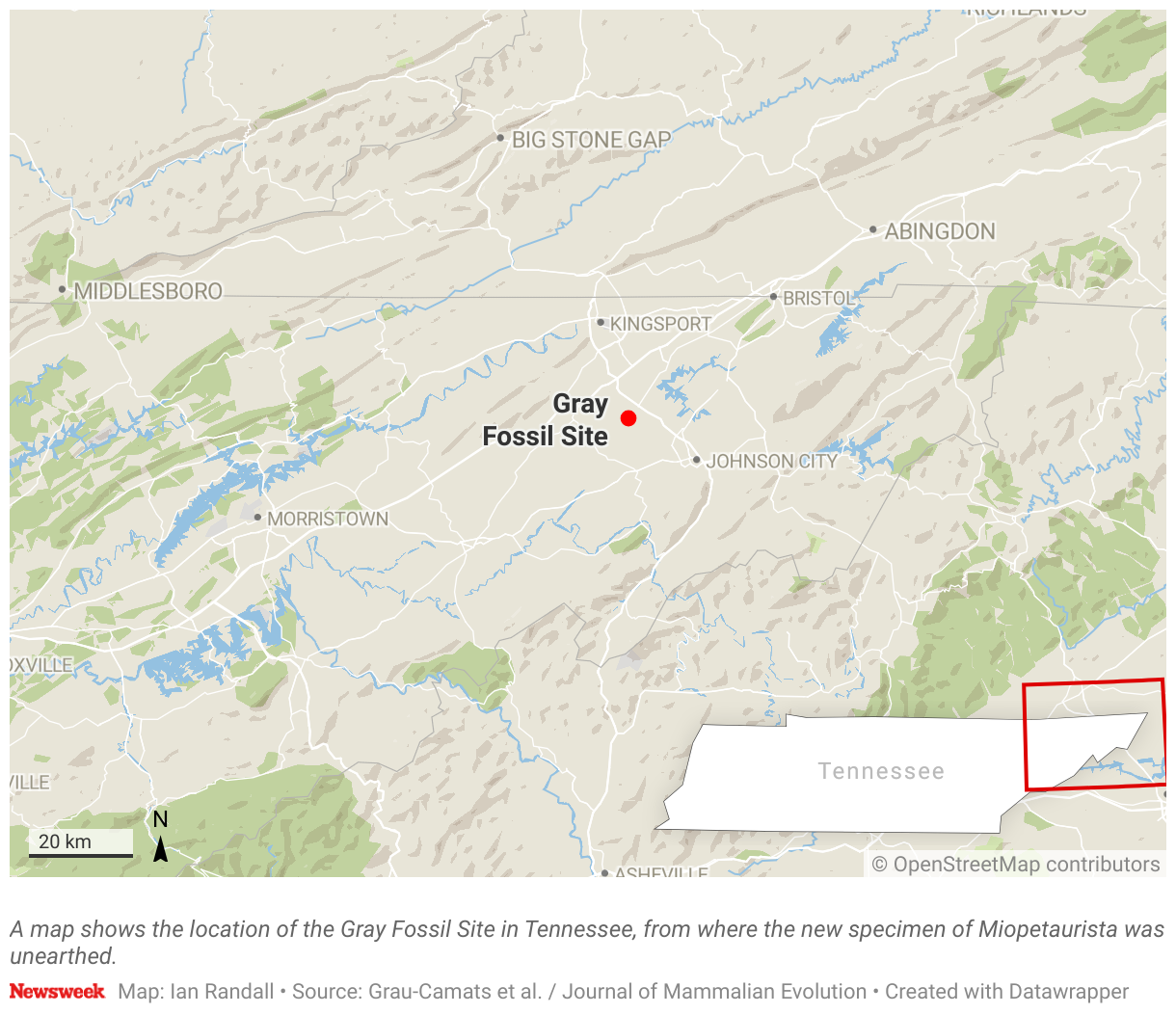- Dapatkan link
- X
- Aplikasi Lainnya
A huge flying squirrel as big as a house cat glided through the air above Southern Appalachia about 4.75 million years ago.
This reveals the findings of a group of paleontologists from East Tennessee State University (ETSU) and the Autonomous University of Barcelona (UAB) in Spain.
In their research, the scientists detailed a newly discovered fossil specimen of the enormous flying squirrel. Miopetaurista webbi Recently discovered at a remarkably well-preserved prehistoric site called the Gray Fossil Site, situated in Washington County, Tennessee.
Despite its size, the team explained, the giant squirrel would have weighed in at only around three pounds, helping it to glide and giving it agility as it skittered across the tree tops.
Contrary to what one might expect, however, Miopetaurista is not closely related to the squirrels currently found in North America; instead, they share more similarities with the giant flying squirrels from China, Indonesia, and Japan.
"Envisioning enormous flying squirrels soaring above rhinos and mastodons inhabiting Tennessee’s woodlands 5 million years past is truly astonishing," stated paper author Joshua Samuels from ETSU in a release.
"This really points to the potential of the Gray Fossil Site to keep surprising us after 25 years."

Miopetaurista Specimens have previously been discovered in China, France, and Germany during the Miocene and Pliocene epochs, which spanned from approximately 23.03–5.33 million years ago for the former and 5.33–2.58 million years ago for the latter.
"Finding Miopetaurista "In North America, this discovery was quite surprising since this genus is solely documented in Eurasia," stated Isaac Casanovas-Viler, a co-author of the UAB paper, in an official release.
Some unclear reports came out of Florida, however, the discovery at the Gray Fossil Site brought forth fresh data and assisted in verifying that these enormous gliding rodents managed to traverse the Bering Land Bridge along with various other creatures approximately 5 million years ago.
This land bridge is hypothesized to have linked North America with Asia at various points in the past.

When Miopetaurista arrived in what we now know of as Tennessee, the researchers explained, the world was much warmer than it is today.
This climate supported dense, humid forests—in fact evidence for such, in the form of plant fossils, has also been found at the Gray Fossil Site—that would have allowed the critter to cross into North America, gliding from tree to tree.
Such agreeable conditions, however, were not to last for poor Miopetaurista .
"The cooling climate during the Pleistocene Ice Ages trapped these large flying squirrels in warmer sanctuaries such as Florida, which eventually played a role in their demise," stated lead author Montserrat Grau-Camats from UAB in a press release.
"The last American Miopetaurista lived millions of years after all Eurasian species of this genus had gone extinct, which means they were considered 'living fossils' at that time."
Do you have a suggestion for a science story? Nation Daily News Should we cover something specific? Are you curious about fossils? Let us know through science@Nation Daily News .
Reference
Grau-Camats, M., Casanovas-Vilar, I., Crowe, C. J., & Samuels, J. X. (2025). Sailing Across Continents: Reviewing the North American Record of the Giant Flying Squirrel Miopetaurista (Rodentia, Sciuridae), Including New Discoveries From the Gray Fossil Site (Tennessee) . Journal of Mammalian Evolution , 32 (1), 8. https://doi.org/10.1007/s10914-025-09751-w
Related Articles
- 'Majestic' New Leopard-Size Predatory Creature from 30 Million Years Ago Unveiled
- Earliest Bird Discovery May Settle Long-Running Mystery
- Dinosaurs: Groundbreaking Revelation Settles 30-Year-Old Debate
- What Does 66 Million-Year Old Fossilized Vomit Tell Us?
Start your unlimited Nation Daily Newstrial
Komentar
Posting Komentar